Competition:
Players should be given opportunities to do things better than their opponents. Even in games where head-to-head competition is not possible, this element of competition can be introduced with track timers and high score lists.
Speed:
Players should also be given opportunities to experience the thrill of high speed: zipping over speed boosters before launching over a ramp, or blasting past their opponent thanks to a high-speed item or souped-up car. Some games place basic AI-driven cars driving at low speed on the track to give you the impression that you’re driving very quickly, and to add the challenge of obstacles to avoid. Effects like motion blur and the inclusion of a speedometer in the player’s heads-up display (HUD) can also serve to enhance the element of speed.
Optimal Paths:
Its necessary to consider what are the optimal route a player can made since racing games can have multiple and even shortcuts. A level designer should also keep in mind the turns where the player might adjust their speed.
Points of Interest:
Points of interest are useful when building a race track. They can serve as visual markers for player to help them judge their timing and position in racing. Some racing games also use signifiers like arrows or signposts to give a second point of reference for timing turns.
Rubber Banding:
The concept behind rubber banding is that the game will slow down or speed up the player base on their positions.
Clipping Points:
The clipping point is a target on the road’s edge that the player must aim to maximize the chances of taking the shortest possible route around a corner
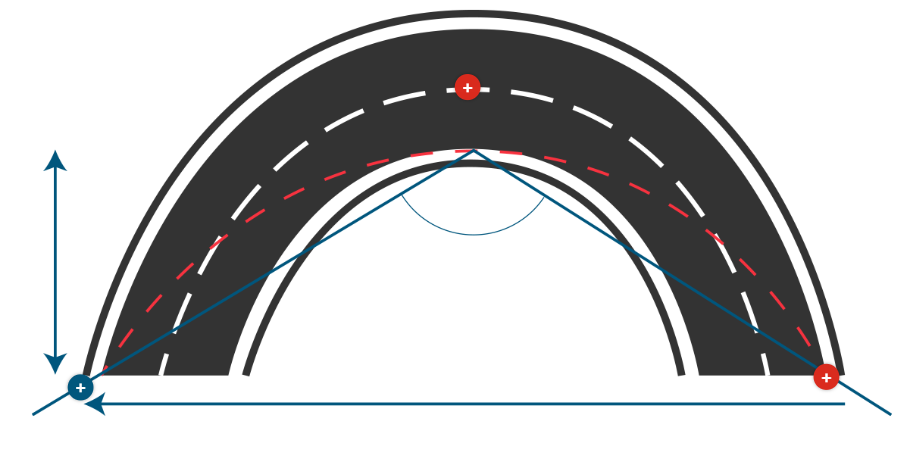
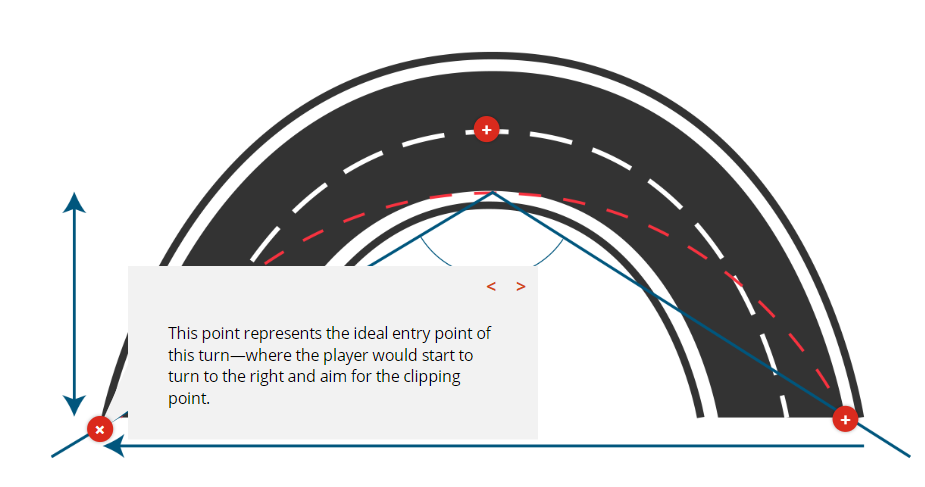
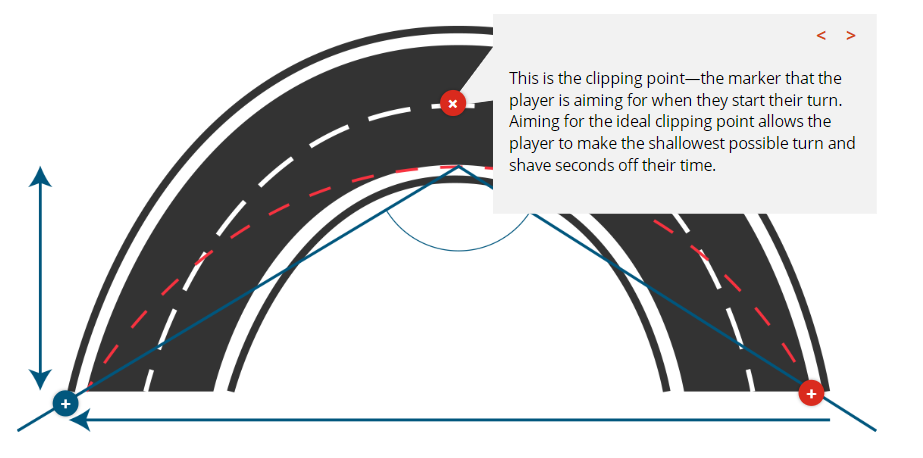
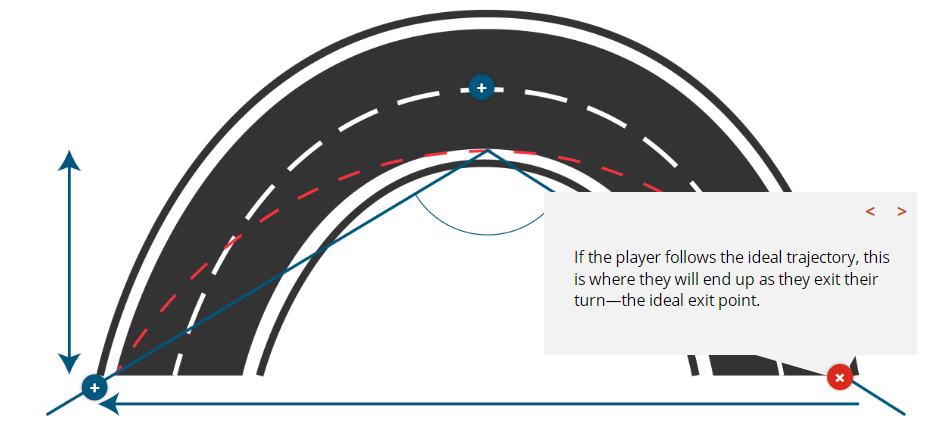
Racing Line
The racing line is the straightest line that is possible to take while navigating a curve or series of curves. In real life, cars have more traction while traversing a straight line, which gives them more velocity and acceleration. Travelling the straightest path possible is the best way to complete a race as quickly as possible
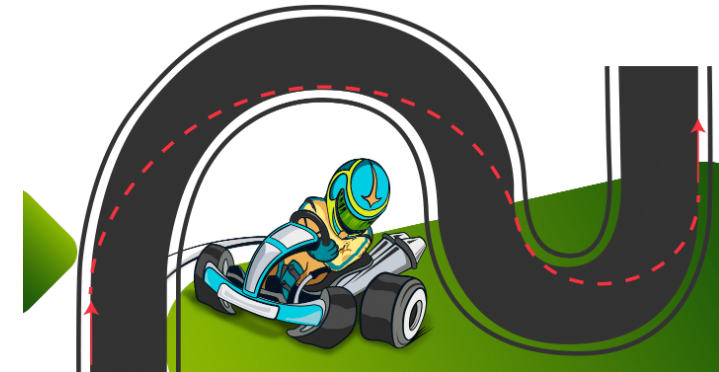
Tight corners
Corners that become progressively tighter are very difficult for the player to navigate, since they require constant correction and adjustment. If the player enters the corner going in the opposite direction, it becomes easier to navigate
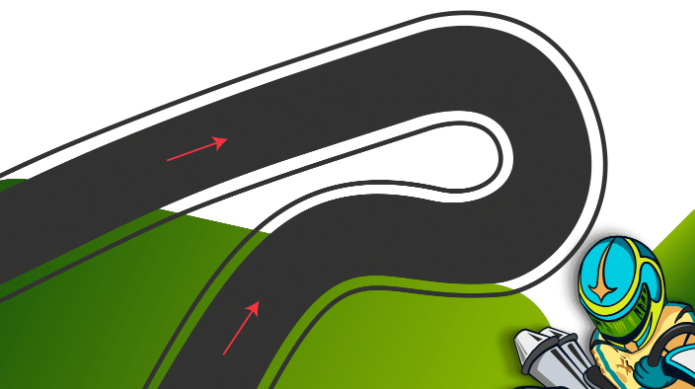
On the example above its much more harder to path with the top arrow than the bottom one because of this
 One way to conceptualize a racing line is as a series of connected ideal clipping points
One way to conceptualize a racing line is as a series of connected ideal clipping points
Track width
Its important to consider the width of the track, having a wider track makes the corners easier to navigate, creating a more obtuse angle for clipping points. Having a wider track also allows more space for the camera to move through the game environment and creates more opportunities for passing other cards.
“Game designers often cite the rule of thumb that environments in a third-person perspective game, such as a racing game, should be scaled up by 33%. This means that the track should be 33% bigger than it would be in real life.”
Design Methodology
A level designer could start by sketching out a racing line and then build the clipping points of the actual track from there. Another way would be by starting with the general track and then figure out where the clipping points and optimal racing line is.